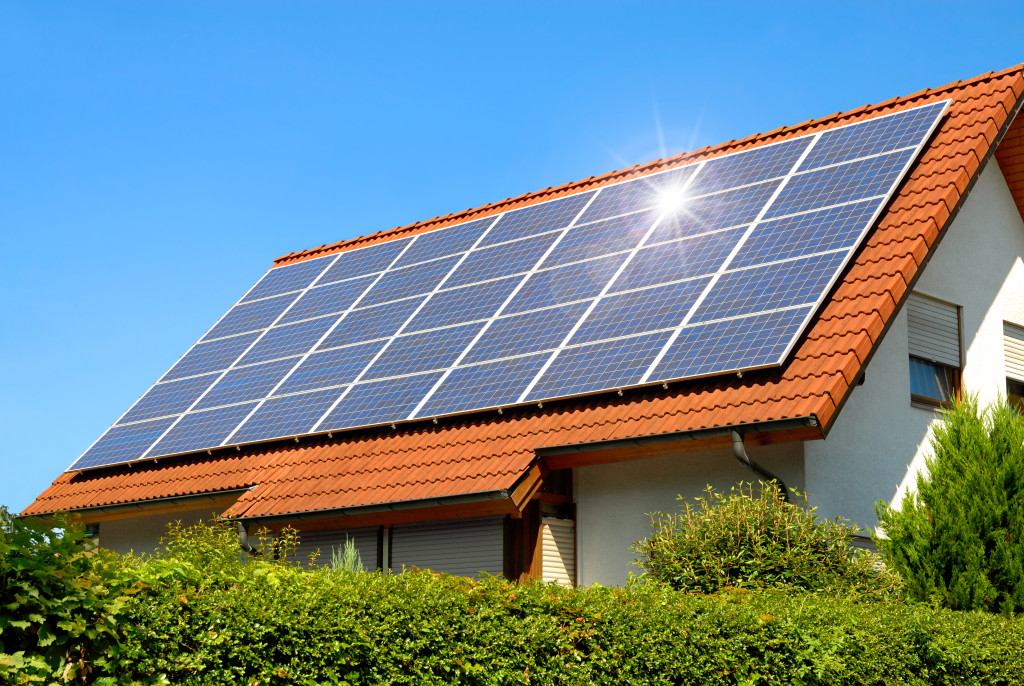Sustainable homes have been becoming a trend in the US ever since the pandemic began. Everyone’s starting to get their necessities from their backyard and reduce their overall power consumption through renewable energy. They are reducing their costs and helping the environment along the way. If you want to make the transition to a much more sustainable home, it’s time that you implement these suggestions into your home.
Green Energy
Green, renewable, and sustainable energy is the source of energy for the future. It’s going to power our homes infinitely and without any disruptions. The revolution starts now, and it will begin in your home.
An essential variable of a sustainable home is sustainable energy, and it comes in various forms. There are solar, wind, hydro, bio, and geothermal energies. Each has its strengths and weaknesses, but most are particularly new in the sustainable energy space. However, there is one that exceeds the rest when it comes to power input and price, and that is solar energy.
Solar energy is one of the first forms of renewable energy, and it has been improving throughout the years. Throughout these improvements comes better cost-efficiency.
Recent statistics have shown that solar energy is much cheaper than any form of renewable and non-renewable energy. It’s even much more affordable than coal. Furthermore, the only carbon emission that’s emitted by this kind of energy comes from the manufacturing of solar panels. These manufacturers utilize sustainable energy, making them produce very little greenhouse gas.
You will need to contact contractors specializing in solar energy to make this transition. The installation will be expensive, but eventually, your energy savings in the future will pay for this installation and even more, making your home more sustainable than ever.

Reducing Electricity Use
Sustainability relies not only on green energy but also on how much power we use at home. The more power we use, the less likely our house will be sustainable. Therefore, reducing electricity use is fundamental in making our homes even more sustainable. There are various ways we can reduce electricity use. One way is through smart devices.
Upgrade and Repair Home Appliances
Old home appliances can cause severe problems in your home’s sustainability. For starters, they consume a lot more electricity than modern home appliances. Also, they break down easily because of the constant deterioration throughout the years.
One of the essential home appliances that require your attention is your dryer. Your dryer is connected to your vent system, and when left unchecked, it can affect your family’s health. Upgrading or repairing your dryer is essential to reduce electricity costs while keeping your family healthy. An upgraded dryer works more optimally and won’t lead to dust accumulation in your vents.
Smart Devices
Smart devices are becoming crucial in maintaining our home’s unique ecosystem of different appliances. This is why so many people are purchasing them in the United States. They can keep track of the power consumption of each, reduce this power consumption if it’s not needed, and turn them off outright.
These kinds of devices are also great when integrated into your HVAC systems. It can monitor the optimal temperature of each room and ensure that it doesn’t exceed a specific limit. All of this can be customized and controlled by you and your tablet.
You can ensure that your home appliances don’t exceed a certain power consumption level. Furthermore, these devices will ensure that you’re informed of any damages to wiring.
Sustainable Backyard
Your home isn’t the only thing that should be sustainable. If you want a truly sustainable home, you should also build a sustainable backyard.
A sustainable backyard can produce certain supplies for you, such as vegetables. There are many ways you can start a sustainable backyard, but it will require some investments on your end. You’ll need to spend on seeds, a robust irrigation system, and suitable landscaping to ensure that your backyard can produce high-quality vegetables. However, it will eventually pay for itself once it starts producing food supplies for you and your family.
When it comes to fertilizer, you can use compost from your family’s daily consumption of goods. Fruit and vegetable peels, coffee grounds, and newspapers can all be part of your compost. Compost is natural and organic fertilizers, and they don’t affect the environment in any way, making them an excellent option for your sustainable backyard.
A sustainable home is a futuristic home, and there are various implementations you have to make to achieve it. You’ll need to invest in these implementations, but don’t worry. Eventually, they will pay for themselves. Once you get a sustainable home going, you can increase your savings, which can then help you purchase more things for yourself and your family.






